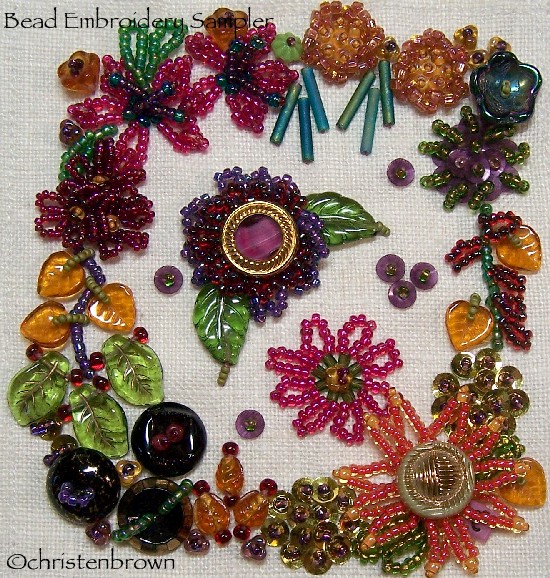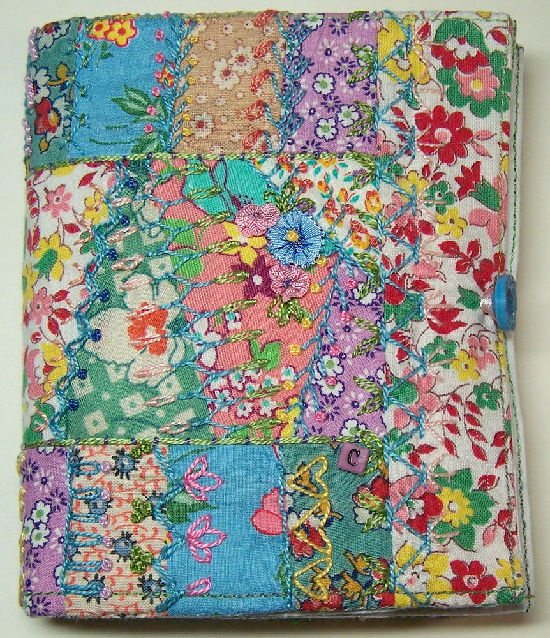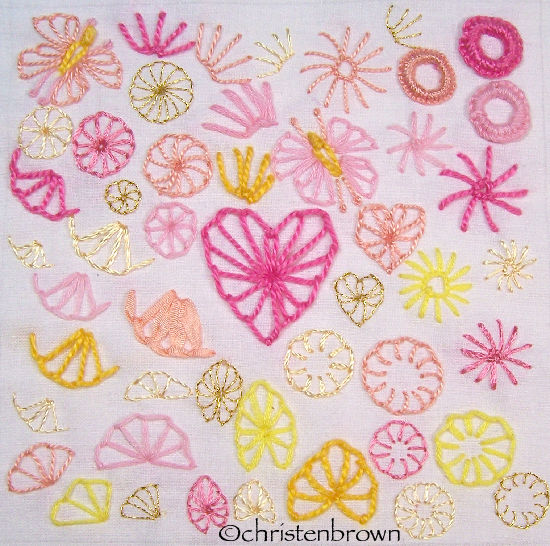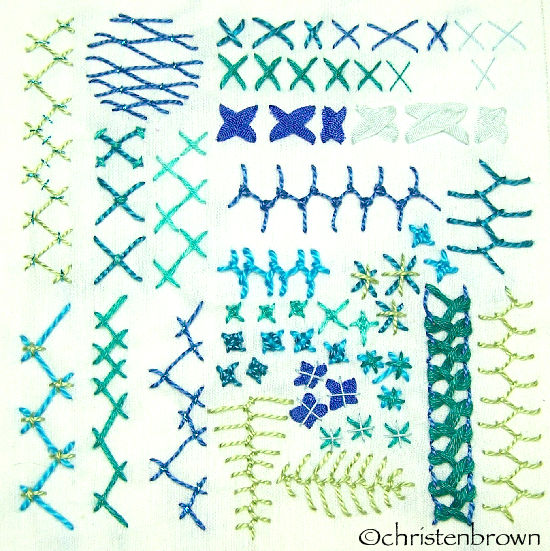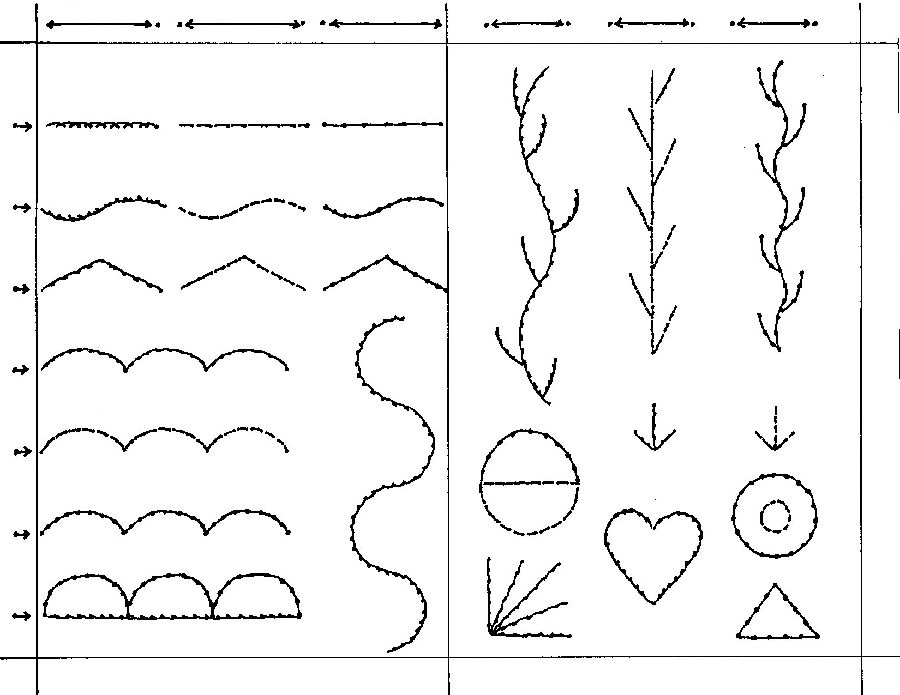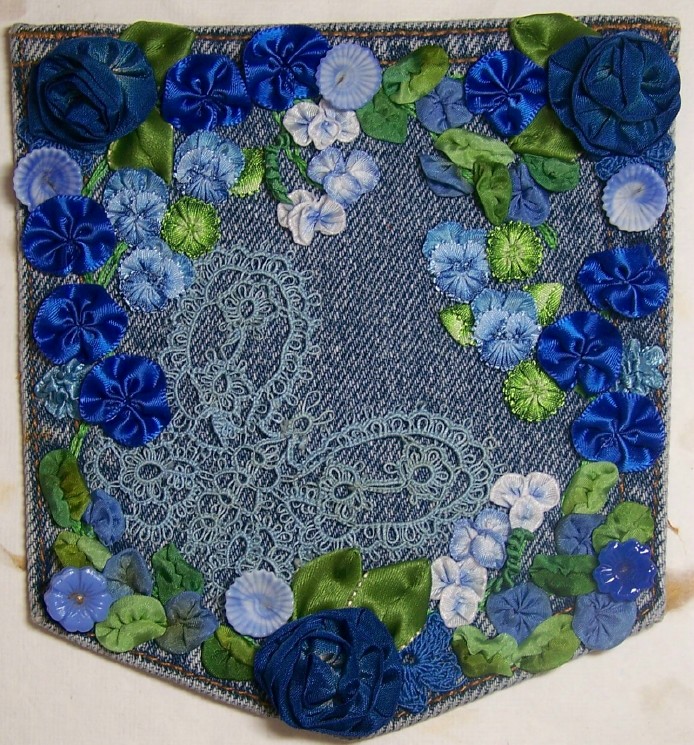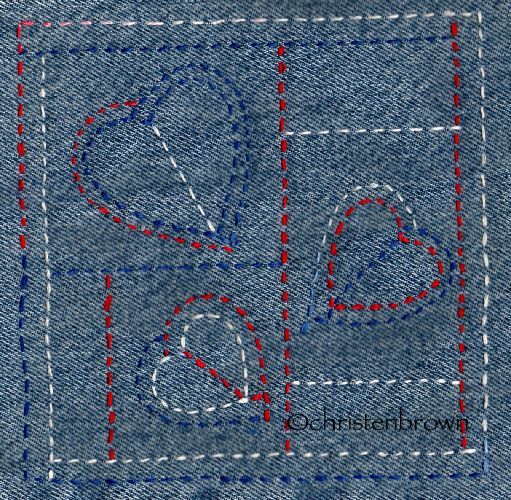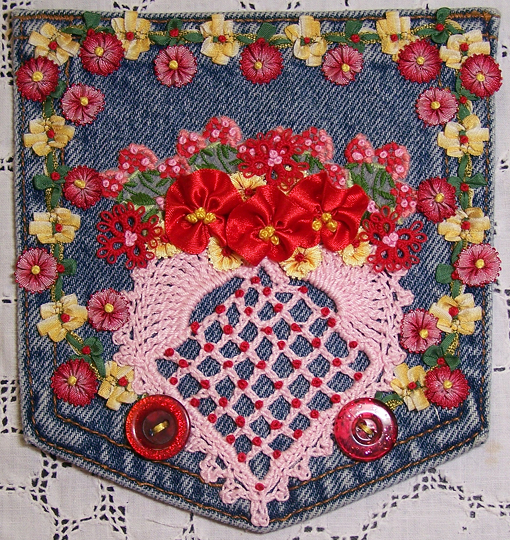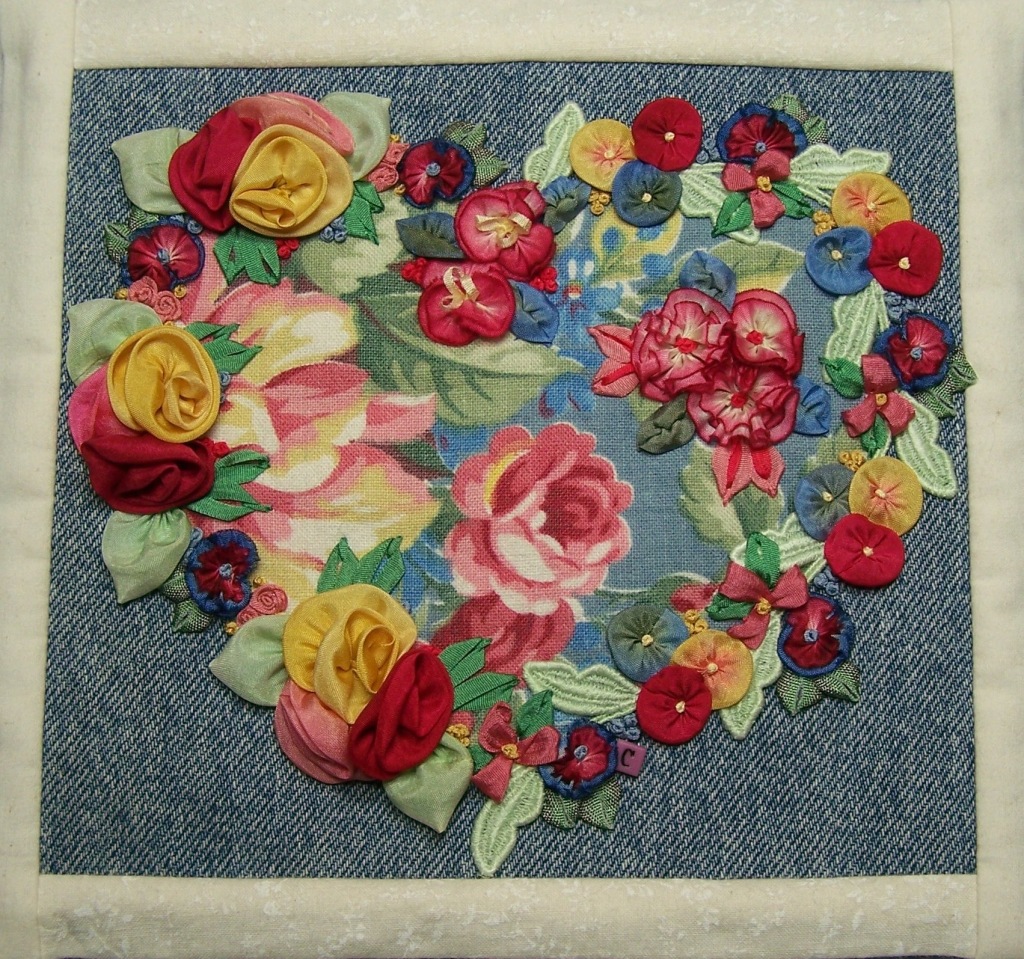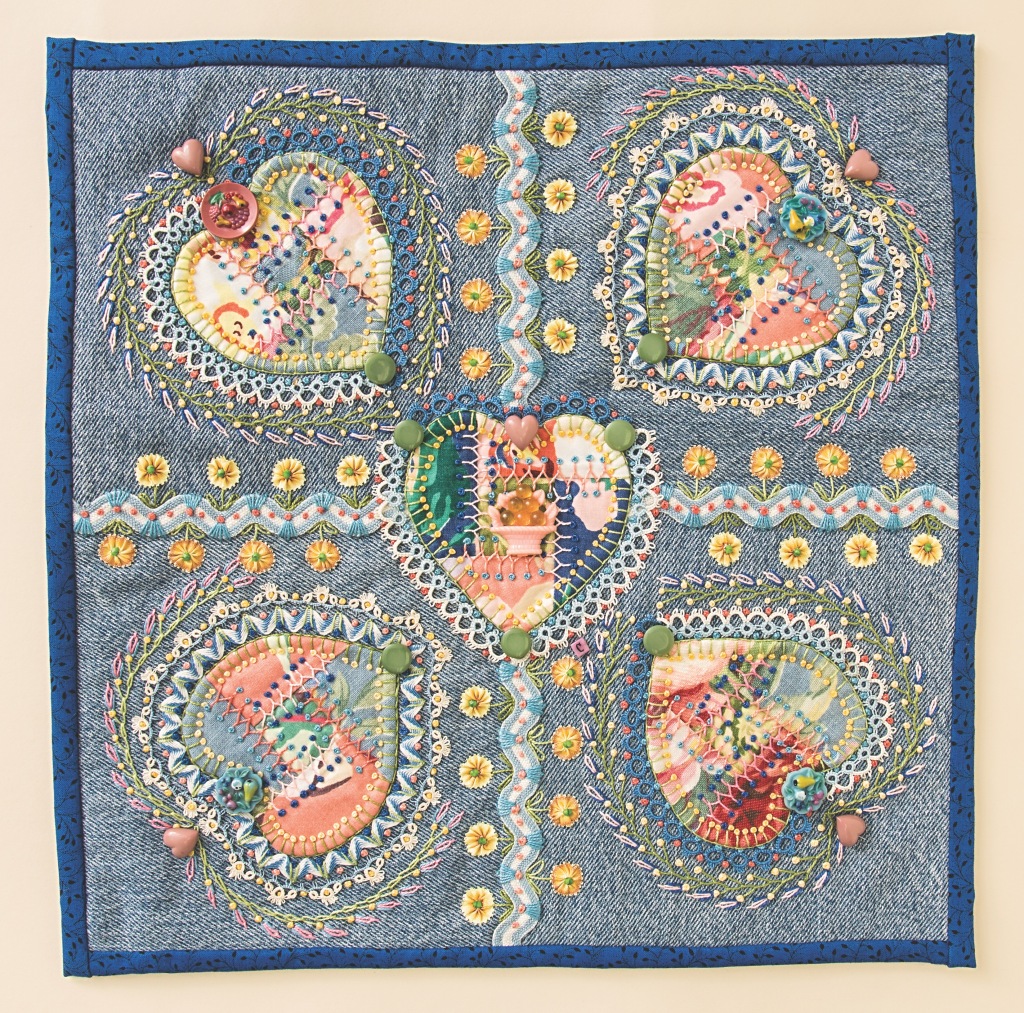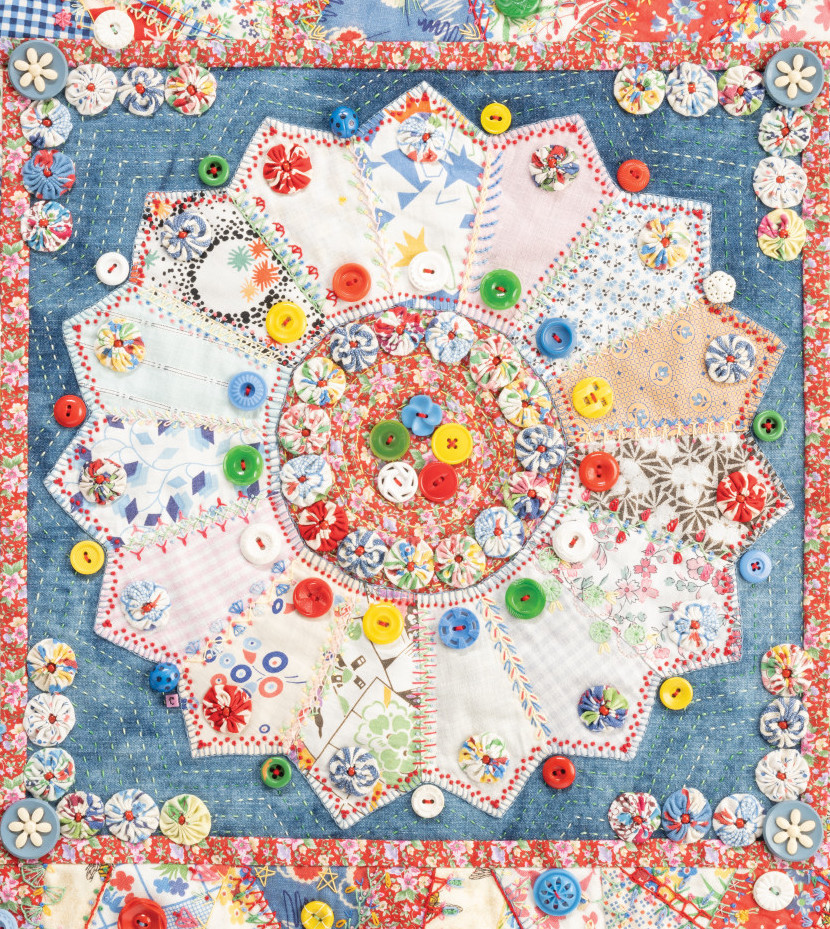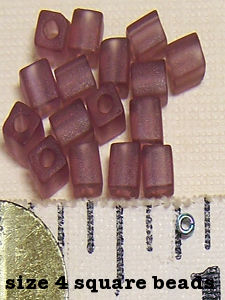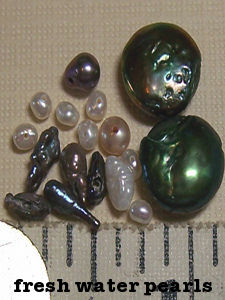Embroidery is one of my most favorite pastimes. I enjoy both the process of creating and being able to pass on my knowledge through teaching and writing. Here are some tips that I hope you find useful.
Cut Lengths
Keep your threads at a minimal length, so that the fibers do not break down, or tangle.
- Embroidery threads: 18″
- Silk embroidery ribbon: 16″
- Metallic threads: 16″
Threading the Needle
- When threading the needle, hold the end of the thread close to the eye of the needle, insert this end directly into the eye.
- Always cut the end of the thread straight across the grain.
- Pinch the tip of the thread and/or wet the tip of the thread.
- Wet the eye of the needle, the moisture will attract the thread.
- A needle threader can also be used for floss or perle cotton.
- Perhaps a magnifier glass with a light source will help.
- Hire a teenager that has great eyesight to thread your needles. (Don’t laugh; I used to do this for a dear friend of mine!)
Knots
- Once the needle is threaded, I knot the tail. After I work a row of stitches, I knot the thread on the wrong side and cut the thread. I then make a knot in the thread, ready for the next row of stitches.
- Another option is to tack the thread at the beginning and end of a row of stitches. Make a tack stitch into the foundation of muslin or interfacing (not through the entire piece). Take another tack stitch next to the first, pulling the thread to make a loop. Insert the needle through the loop and pull the knot closed.
Thread and Ribbon Specifics
Perle Cotton
When working with a ball of perle cotton, the loose end of thread will be found wrapped horizontally around the ball. This end is usually tucked under several layers of wrapped thread, so pull gently to find the end. Thread the needle with the loose end, and then cut off the amount needed.
When working with a skein of perle cotton, first remove any paper wrappers or tags. Untwist the skein and find the knot, then use one of the following suggestions.
- Cut the knot of thread and wrap the length of the skein over a Stitch Bow thread holder. Tie the one end to the loop on the Stitch Bow and place the wrapper with the color # on the small rectangular portion of the holder. Take the loose end and cut off 18″ of thread, thread this onto the needle.
- Cut through the entire skein at the knot, and tie into a loose knot to hold the threads together. Pull one thread out from the knot at a time, cut the length into two 18″ pieces. Select one piece and thread this onto the needle.
Floss
When working with a skein of floss, the mystery is always finding the tail without creating a big ball of knots. In most cases the tail closest to the paper wrapper listing the color#, will come out of the skein easily with no snarls. Pull out the tail and cut off 18″ of thread.
Another option is to remove both of the paper wrappers from the skein and slip the skein over a Stitch Bow thread holder. Tie the inner loose end to the loop on the Stitch Bow and place the wrapper with the color # on the small rectangular portion of the holder. Take the loose end and cut off 18″ of thread.
In most cases you will be working with a portion of the 6-strand length of floss. The number of strands you will use is up to you and your design. I usually use 3 strands, if a smaller stitch is needed then 2 strands. Here is how to split the threads:
- Hold onto the cut length of thread with one hand between your thumb and forefinger.
- Hold the remaining amount in the other hand, between forefinger and middle finger.
- Hold the length loosely in the same hand, between your thumb and ring finger.
- Pull your hands apart slowly to release the strands from the skein, let the thread flow between your thumb and ring finger.
- Choose the amount that you want to work with, 2 or 3 strands, and set the remaining group aside.
- Working with your chosen group, separate each thread individually, then reassemble these back together and thread this length onto the needle.
Silk Embroidery Ribbons
Whether you are working with a spool, reel or loose length, cut short 16″ of ribbon off. Then follow the following directions to knot the ribbon.
Beginning Knot
- Thread the ribbon through the eye of the needle, leaving a 2″ tail. Pierce the ribbon with the needle 1/4″ above the end of the tail.
- Pull the length of ribbon to snug the ribbon up to the eye.
Tail Knot
- Thread the needle through the tail with a straight stitch. Pull the ribbon through the stitch until only a small loop of ribbon is left.
- Thread the needle through the loop and pull the ribbon to form a knot.
Option: If you do not want to make a tail knot, then thread the needle through the fabric first, then hand stitch the tail in place with sewing thread.
Metallic Threads
Work with a short 16″ length, to minimize fraying on the ends.
- Fold over about 5 ” of the length of thread to make a small loop.
- Thread the loop through the needle.
- Insert the tip of the needle into the loop.
- Leaving a short tail, pull the length of thread to tighten the loop around the eye of the needle.
Finger Frame
All of the fabric bases have some form of stabilizer, so that I do not have to use a wooden or plastic frame. It is still important though to keep the fabric taught so that the embroidered stitches do not get pulled too tightly which will pucker and distort the fabric. I create a frame by holding the fabric between my fingers.
- Using your non-dominant hand, pinch the fabric between your forefinger on top and middle finger underneath.
- Leave a space of fabric, and then pinch the fabric between your thumb on top and ring finger underneath.
Happy Stitching to you! ~Christen
PS: If you are looking for inspiration or ideas, check out my PDF Classes and books.



